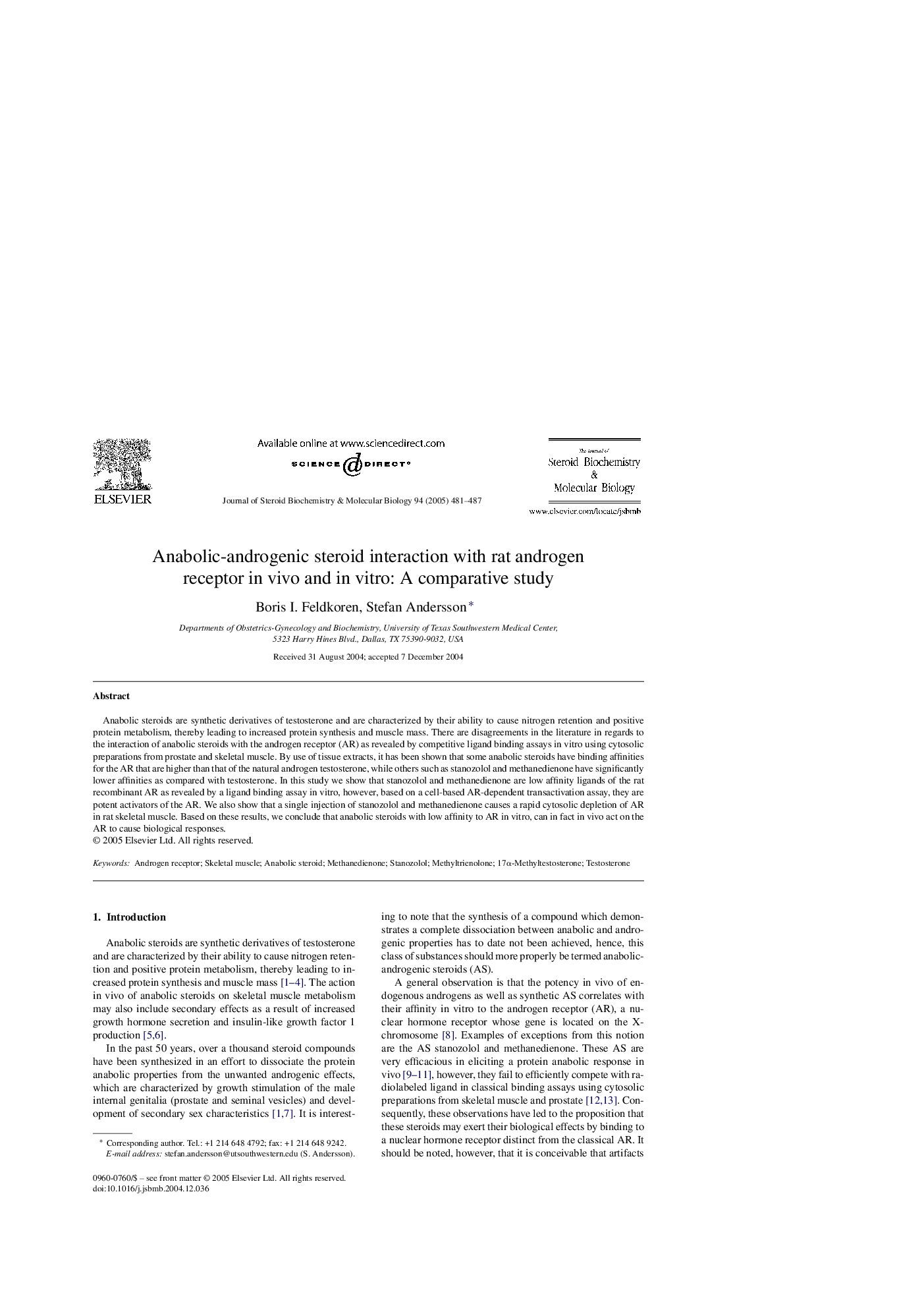| Article ID | Journal | Published Year | Pages | File Type |
|---|---|---|---|---|
| 9892153 | The Journal of Steroid Biochemistry and Molecular Biology | 2005 | 7 Pages |
Abstract
Anabolic steroids are synthetic derivatives of testosterone and are characterized by their ability to cause nitrogen retention and positive protein metabolism, thereby leading to increased protein synthesis and muscle mass. There are disagreements in the literature in regards to the interaction of anabolic steroids with the androgen receptor (AR) as revealed by competitive ligand binding assays in vitro using cytosolic preparations from prostate and skeletal muscle. By use of tissue extracts, it has been shown that some anabolic steroids have binding affinities for the AR that are higher than that of the natural androgen testosterone, while others such as stanozolol and methanedienone have significantly lower affinities as compared with testosterone. In this study we show that stanozolol and methanedienone are low affinity ligands of the rat recombinant AR as revealed by a ligand binding assay in vitro, however, based on a cell-based AR-dependent transactivation assay, they are potent activators of the AR. We also show that a single injection of stanozolol and methanedienone causes a rapid cytosolic depletion of AR in rat skeletal muscle. Based on these results, we conclude that anabolic steroids with low affinity to AR in vitro, can in fact in vivo act on the AR to cause biological responses.
Keywords
Related Topics
Life Sciences
Biochemistry, Genetics and Molecular Biology
Biochemistry
Authors
Boris I. Feldkoren, Stefan Andersson,
